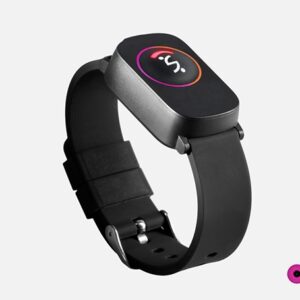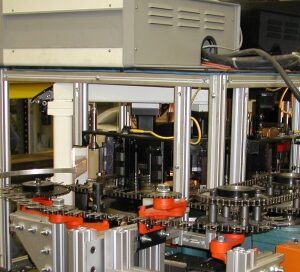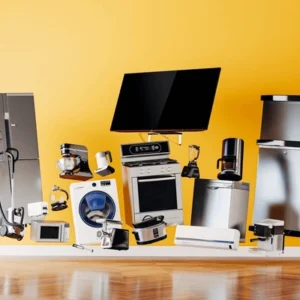Consumer electronics have become an inseparable part of our daily lives. From smartphones and smartwatches to laptops, gaming consoles, and home automation devices, these innovations are the result of years of research, development, and above all—design excellence. At the heart of this evolution are consumer electronics designers, the professionals who blend creativity, engineering, and user experience to create products that are not just functional but also user-friendly and visually appealing.
In today’s competitive technology market, consumer electronics designers are no longer confined to making devices look sleek. Their role extends to ensuring usability, sustainability, ergonomics, and alignment with market trends. Let’s explore their importance, skillsets, challenges, and how they are shaping the future of technology.
Who Are Consumer Electronics Designers?
Consumer electronics designers are professionals responsible for conceptualizing, designing, and developing electronic products meant for mass consumer use. These can include devices such as:
- Smartphones and tablets
- Wearables (smartwatches, fitness trackers, AR/VR headsets)
- Home automation systems (smart speakers, IoT-enabled appliances)
- Laptops and gaming devices
- Health and wellness gadgets
Unlike industrial engineers who primarily focus on functionality and performance, consumer electronics designers bridge the gap between technology and the end-user. They ensure that the product is not only efficient but also comfortable, intuitive, and appealing to a broad audience.
The Responsibilities of Consumer Electronics Designers
The role of a consumer electronics designer involves a mix of technical expertise and creative thinking. Their responsibilities include:
- Product Conceptualization – Understanding consumer needs and transforming them into design concepts.
- User Experience (UX) Design – Ensuring that devices are intuitive and easy to use.
- Ergonomics – Designing products that fit naturally into human interaction, such as comfortable wearables or handheld devices.
- Aesthetic Design – Creating sleek, modern, and attractive designs that appeal to consumers.
- Sustainability – Selecting eco-friendly materials and energy-efficient components.
- Collaboration – Working with engineers, software developers, and marketing teams to ensure a holistic product design.
The Skills That Define Successful Consumer Electronics Designers
In todayʼs rapidly changing electronics industry, designers have to be equipped with a range of skills.
Industrial and Residential Design Knowledge: Constructing 3D models, sketches, and prototypes.
Understanding Electronics: PCB layouts, circuitry designs, hardware integration and so forth are things that all electronics designers need in their repertoire.
Human-Centered Design (HCD): Putting oneself in the user’s place and designing to empathize with them.
Prototyping & Testing: Make mock-ups and test their operability.
Software Proficiency: You have to be good at using CAD tools, UI/UX platforms, simulation software and all those bits and bobs that are in between the different stages of design work
Market Awareness: You must be familiar with market trends and consumer demand.
Why Consumer Electronics Designers Are Essential Today
In an era teeming with competitive products, invention alone does not determine success. A product has to win the hearts and minds of consumers in order to be successful. Now to see what role the consumer electronics designer plays. In general, they:
Directing consumer behavior with this we can assume that a product that is technically outstanding may not do well if it is hard to use. Designing the interaction between people so that technology is convenient for everyone.
Driving Market Differentiation the industry is literally inundated with hundreds if not thousands of new products including mobile phones and watches being brought out each year, but good design user experience will make your product survive.
Shaping Brand Identity the success of companies such as Apple, Samsung and others is due largely to these designs created by top-notch consumer electronics designers.
Supporting Sustainability Goals designers are the first people to choose recycled materials they also help reduce disused electronic equipment and develop energy-saving products.
Trends Influencing Consumer Electronics Designers
The design scene is changing all the time. Some current trends include:–
AI Integration: The UI/UX design of devices with built-in artificial assistants must be intuitive.
IoT (Internet of Things): Designers need consider how multiple devices will interact.
Wearable Tech: Comfort, weight of material and the sense of style all come into play.
Sustainability: Eco-friendly design is as much a consumer demand as it is a corporate choice.
Minimalism & Aesthetics: Clutter-less, sleek designs form today’s requirements for customers.
Challenges Faced by Consumer Electronics Designers
Despite their pivotal role, faced with a whole raft of problems the consumer electronics designer has only just begun to come up against:
Balancing Functionality and Aesthetics: Striking the perfect balance between looks and performance.
Rapid Technological Changes: Adapting to fast-evolving hardware and software needs.
Cost Constraints: Designing premium-looking devices constrained by budget limits.
Sustainability Pressure: Sufficing green standards won’t undercut durability.
The Future of Consumer Electronics Design
Consumer electronics designers have some exciting things coming their way in the future. With advances in AI, AR/VR, flexible displays and wearable tech, the sky’s the limit for innovation. Future designers will work on:
Immersive User Experiences through AR/VR-enabled devices.
Sustainable and Circular Designs to decrease e-waste.
Customization & Personalization to meet individual user needs.
Health-Centric Gadgets that blend medical precision with end user usability.
Consumer electronics designers will continuously bridge the gap between one-off human needs and technology capabilities.
Q1. What is the position of a consumer electronics designer in product development?
In developing products, consumer electronics developers conceive pictures, finesse designs and make them practical, user-friendly and beautiful, which thus fills the gap between engineering and consumer demand.
Q2 What is the difference between consumer electronics designers and engineers?
While engineers are focussed on a device’s technical performance, designers ensure thats here is usability, aesthetics, ergonomics, and the whole user experience.
Q3. How are consumer electronic designers important for the success of a brand?
A well designed product enhances customer satisfaction, builds brand loyalty and distinguishes a company in a competitive market.
Q4 What skills must a good consumer electronics designer possess?
They should excel in prototyping, ergonomic principles, knowledge of users’ needs and market trends, human-centered design and industrial design.
Q5. What future trends will shape consumer electronics designers?
next current AI integration, on wearable t echnology, internet of things connectivity and VR wearable.
Conclusion
The role of consumer electronics designers is more indispensable than ever. They are the creative directors behind the daily tools we use –insuring that great ideas are also easy to use, beautiful, and live up sustainable standards of ai hardware development. And in the age defined by new technology breakthroughs, these workers will continue to reshape how people relate to electronic tools of all kinds. This will be as building blocks for an even smarter, better-connected tomorrow.





